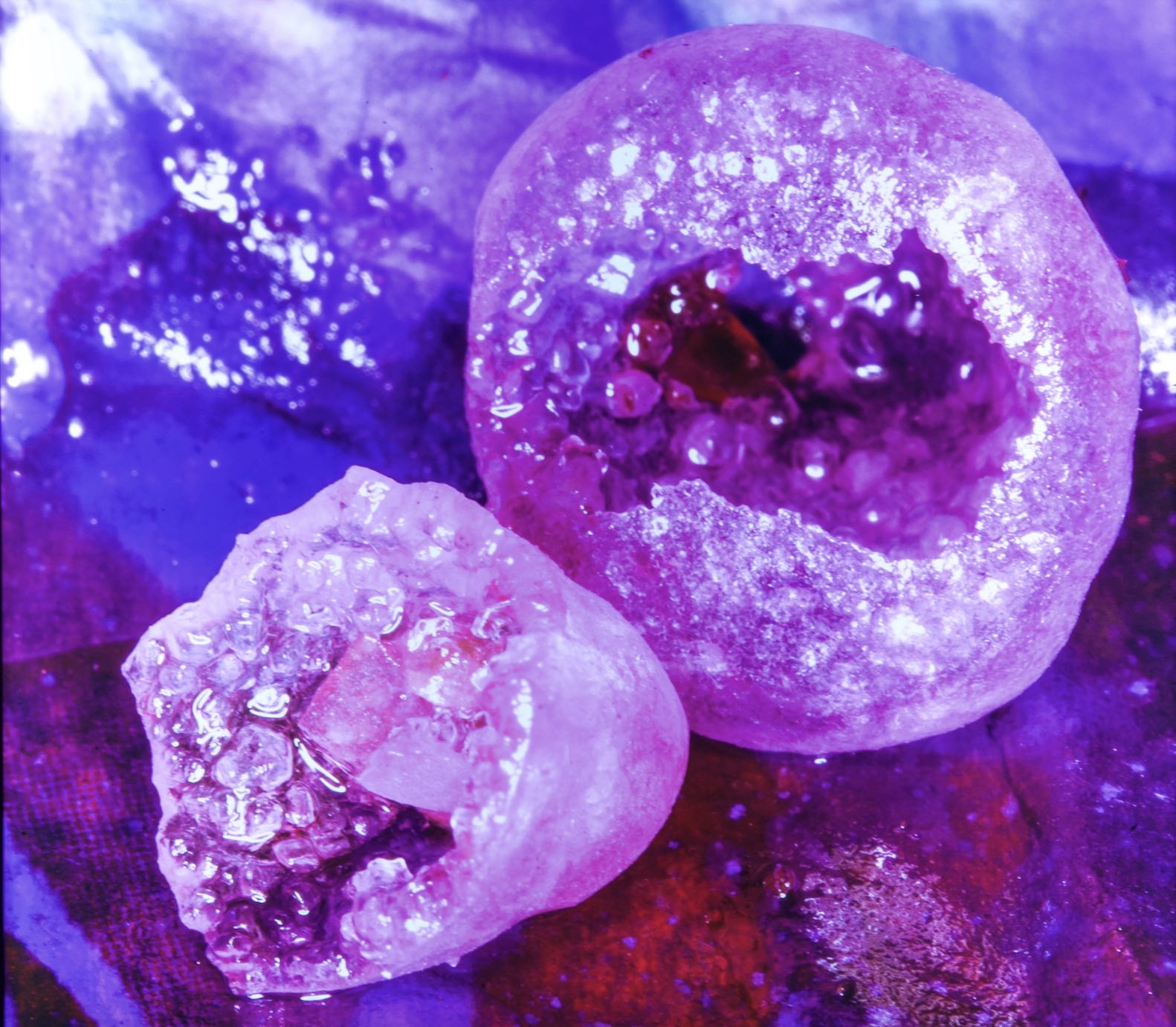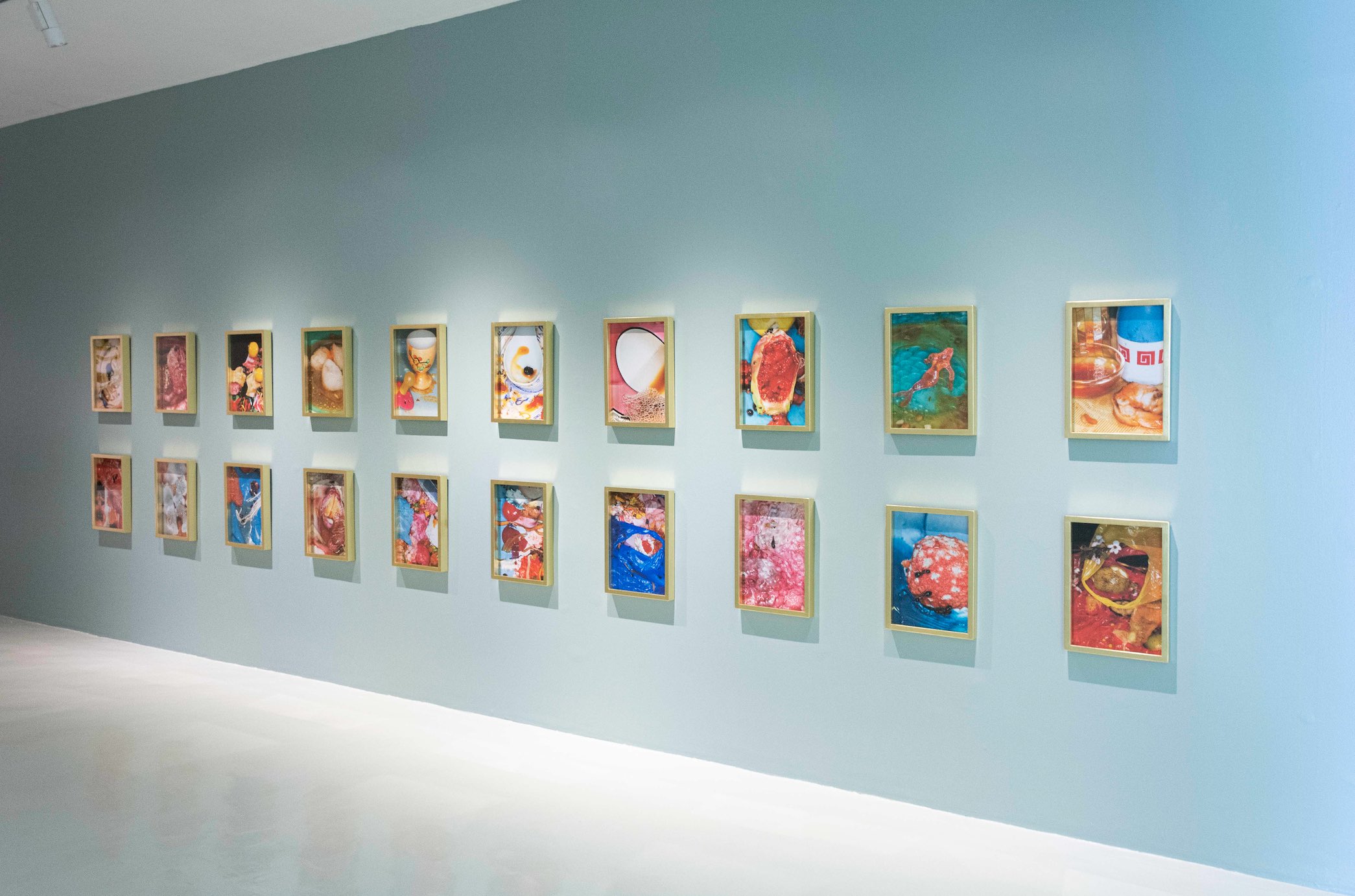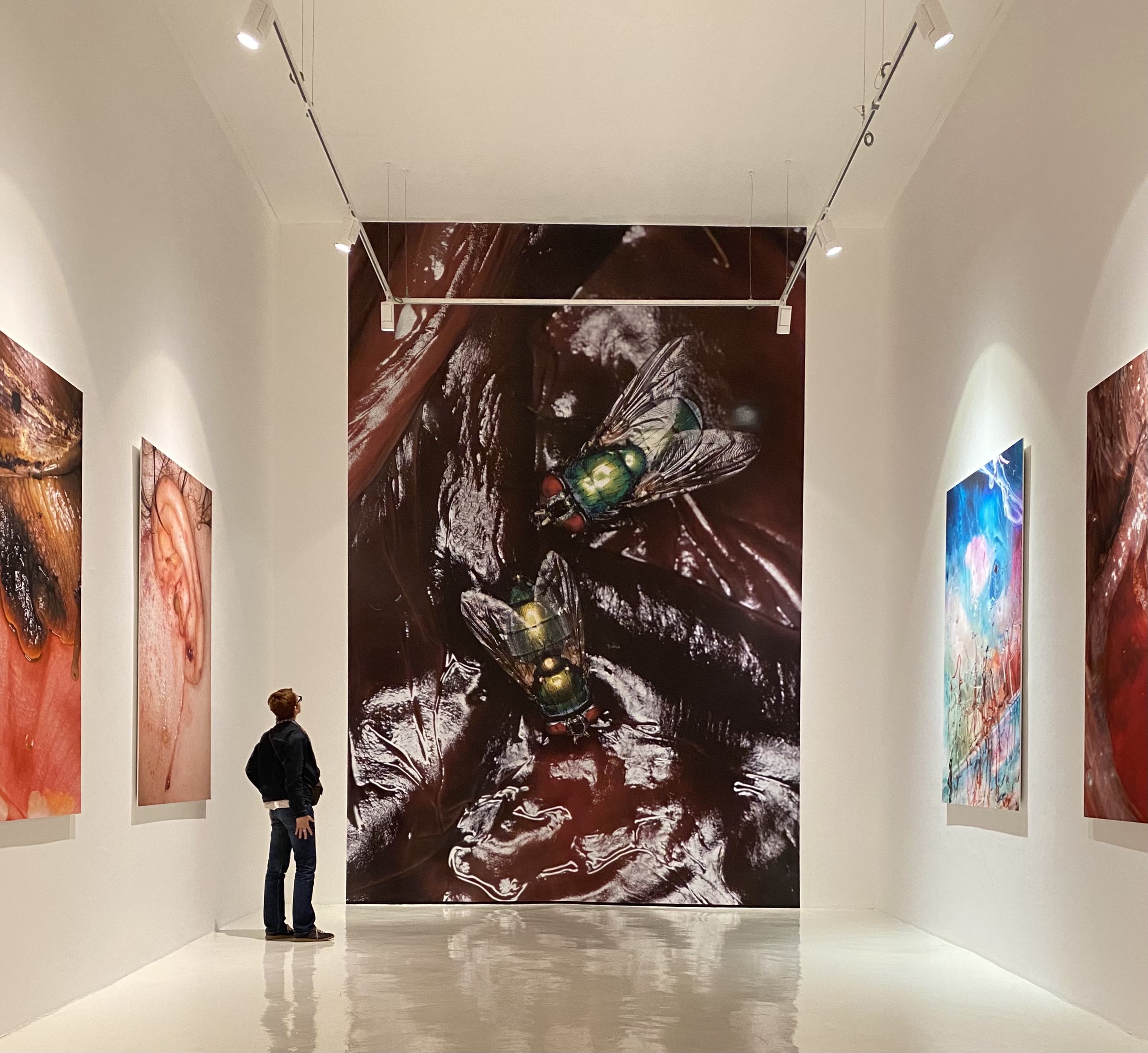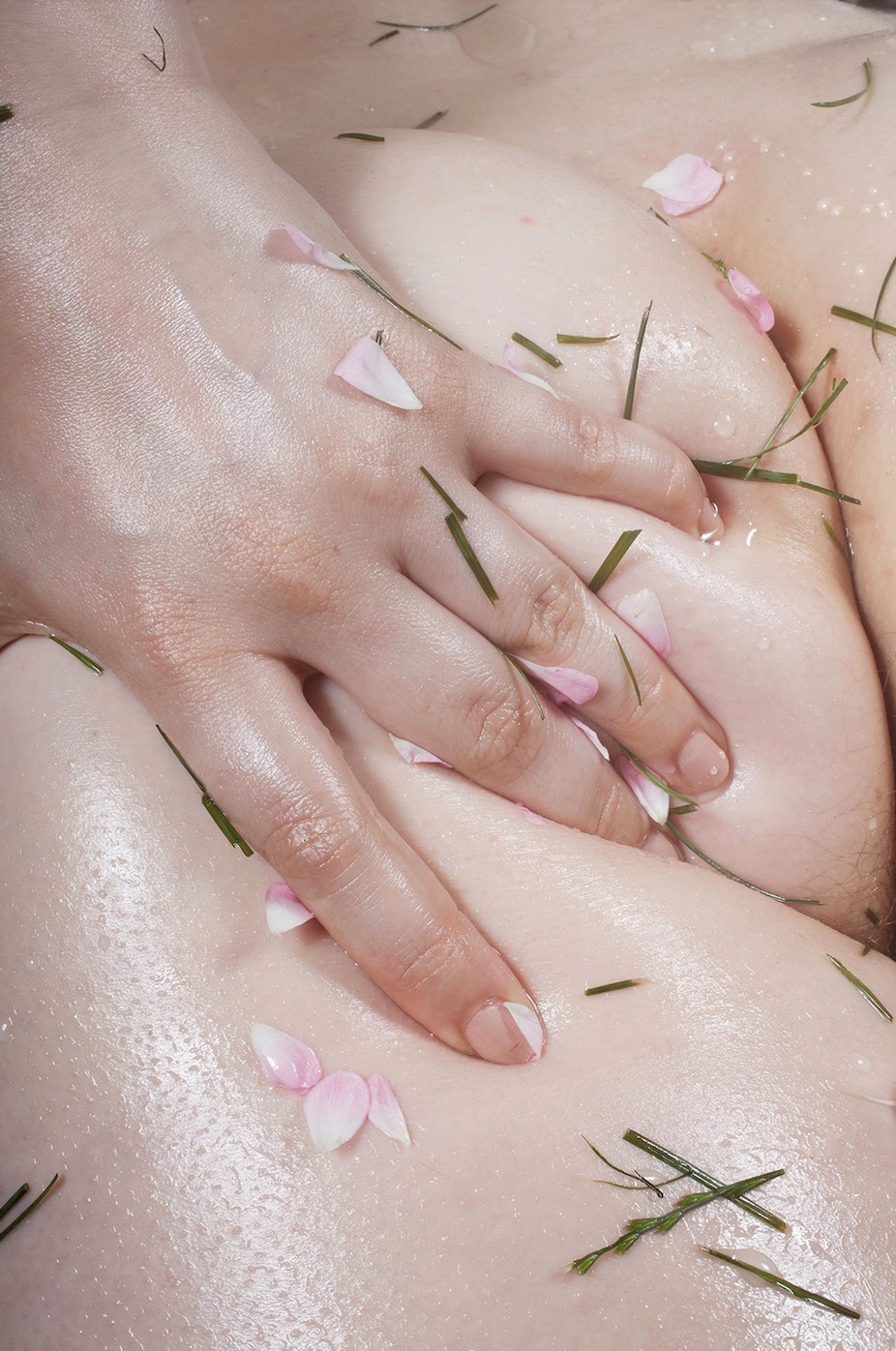
Review
(C)olors of Decay and Hints of Life: Maisie Cousins
by Stefanía Acevedo
About 'Jardín, Cocina, Basura y Cuerpo' at Galería Hilario Galguera
Reading time
6 min
Maisie Cousins (1992, London) presents her work for the first time at Galería Hilario Galguera. Jardín, Cocina, Basura y Cuerpo [Garden, Kitchen, Rubbish, and Body] brings together forty-six photos that present a journey through the artist’s work from 2015 to 2021. Each word making up the exhibition’s title combines the themes that organize it, giving rise to an erotic exercise of imagination in which Cousins’s gaze passes through food, things that rot, trash, bodily fluids, and all that we usually don’t want to see.
Garden
The intensity of the colors in the first room is enhanced by the natural light that enters through the open ceiling in the gallery. Here we find images of insects, fruits, and flowers. Wasp (2017) is the star of the yellow wall on which it is located, warning us of the high contrasts that we will find throughout the exhibition. Almost hidden, on the adjoining wall, we find Blue (2020), a small photo that reveals the variety of formats at play in this exhibition, and that—together with the photomicrography carried out by Cousins—leads us to feel the same size as insects. The erotic offering is declared with such photos as Big Dick (2017) and Bumhole (2015), both flowers that confront their red tones with the white wall on which they stand. Before entering the next room, Snails (2019) and Come Back (2020) inaugurate the dance of live and dead animals that pass through trash and rotten food in Cousins’s work. All small- and medium-format photos have a gold frame evoking the book Rubbish, Dipping sauce, Grass Peonie Bum (2019). This gesture adds some humor to the work, showing that trash can also be covered in gold.
Kitchen and Rubbish
In a dark room we find Mexico Sweeties (2018), a photo taken by the artist on her first visit to this country, mounted on a light box that illuminates in pink, red, and purple the decay and death of the other two images accompanying it. Both sweets and the very idea of the grotesque prepare us to face a succession of overflowing and hypersaturated impressions that, like sugar, can only be fully experienced in childhood.

“This is a show designed for children,” says Hilario Galguera, who worked closely with Cousins to make curatorial and editing decisions. For Galguera it was important that in the Kitchen the photos had height variations so that they were accessible to different views. Thus, we find a series of twenty photos arranged in rows that allow different levels of vision for children, who tend to be closer to everything that falls from tables and that remains on the floor. In the top row are images of food wastes found on tables. To the right, in another variation on height, there is a series of six photos that in close detail display food with different textures and colors, giving us the feeling of being able to touch them.
Cousins’s imaginary is nourished by markets and their smells: there she usually goes to buy ingredients for her photos. Some foods will be eaten, some will serve as leftovers—left to rot—and, at the point between life and death, will create an image with seemingly unrelated elements. She tells us: “It’s like a shopping list that I write—sometimes I look for slimy or soft textures, sometimes something alive. I put it all together and see what happens. It has its own life. I don’t want to control it too much.”
The smell of rot is something that has probably accompanied Cousins in producing her photos. Her work plays with chance and waiting, with that moment in which decay reaches another tonality. Thus, it shows the ephemerality of existence, but also how beautiful its portrayal can be. Life decays and Cousins captures it: “Decay isn’t a process that we document in our life.” In her photos, leftovers, garbage, and dirt are the protagonists, as shown in one of the first large-format images that we find in the exhibition: the fragment of a plate with food residues on a green tablecloth. In front of it is another large-format photo presenting a cluster of ants pouncing on traces of liquid caramel. These ants exit the picture, leading us to Oaxaca Ants (2018), another of the images that Cousins took during her first visit to Mexico.
Body
From the Kitchen, guided by the ants that are on the ground, we enter the Body. The last room contains large-format photos in which Cousins explores the body’s folds, its viscosity, and its secretions, through eight images portraying the very possibilities of the body. Eroticism passes through a female gaze reminding us that one of the first lessons we learn as women is that we have fluids that we cannot control. In this regard, the artist tells us: “I feel sorry for men when it comes to sensuality because I think they miss out on a lot of things, on a lot of fun.”

The most intimate photo portrays Cousins’s placenta, which she kept in her freezer so that she could face it from a temporal distance. “I couldn’t stop thinking that it had come out of me—I had every intention of taking a picture of it, but I didn’t want to look at it,” Cousins tells us. When she dared to defrost it, in the company of her mother, the flies arrived after five minutes and from there emerged the image that is now displayed in shades of brown and black, accompanied by a bright green. It’s a gesture of what runs throughout all her work: where life is generated, where nutrients are condensed, and where we also find rot, flies, and decay. In front there is Grass Bum (2015), where a close-up-detail lets us see an oiled skin that is accompanied by petals and grass. Cousins shows fragments of bodies and not complete scenes—hence the exhibition’s title, which is made up only of nouns. Everything is located at the level of details, aspects, folds, small animals, and body parts.

For someone like me, whose hands are constantly sweating and who lives with the trauma of having to touch or greet people, it is important to remember that the sticky, sweaty, dripping, bleeding, and grotesque can be fascinating.
Maisie Cousins is like an anthropologist from the future who investigates a civilization in decline, capturing in her photos the remains of that which once had life. Sometimes we think that what will last are big buildings or monuments—when in fact it will probably be the small things, exactly like what Maisie captures.
Jardín, Cocina, Basura y Cuerpo can be visited until January 20, 2022 at Galería Hilario Galguera.
Translated to English by Byron Davies
Published on November 20 2021